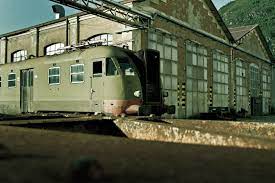On the possibility of mass gassings (Letter)
Dear Sir,
Theoretically hangars for train disinfestation could have been used for mass killings of Jews but in practice they could not have been so used because in fact nobody, after the execution, could have entered the place and removed the bodies.
The existence of those hangars for train disinfestation had been known of for a long time and I recall having spoken of them, as early as 1979, at a conference in Los Angeles during my first stay in the United States. Among my slides were, notably, some showing a train disinfestation hangar (in Budapest?). I’ve repeated a hundred times that gassing inert material with Zyklon B (clothing, various objects, holds of ships, trains, hangars, churches, silos, libraries, dwellings,…) constitutes, surely, a delicate and dangerous operation but not an impossible one: it’s enough to take a certain number of precautions (for example, in order to prevent spreading of the gas outside, explosion, etc.) and carry out an airing or a ventilation of the place gassed, or an airing out of the material in which gas may remain. I’ve described these procedures.
On the other hand, when the material is a living one about to be put to death, the problem becomes daunting for living matter will absorb the HCN: the corpse becomes untouchable; it is entirely permeated and imbued with a terrible poison. It’s for this reason that an execution gas chamber is so complicated and it’s why the physician and his two aides must take far more precautions still when they enter after an execution, and only after a lengthy, thorough and sophisticated ventilation of the place. Here I won’t go over everything they have to do, which doesn’t give much of a guarantee for, even after all that, the body to be taken out of the chamber may remain dangerous. You can imagine, then, the formidable dangers that would be presented by heaps of corpses, whether in a hangar, a house or an alleged “Nazi gas chamber”. There’s the rub. “Hic jacet periculum” and nowhere else. We end up with a complete practical impossibility. Hence my request from 1978: “For me, these mass gassings of human beings are technically impossible; now, if you yourselves think they’re technically possible, show me how”. You know the answer I was given on February 21, 1979: a joke and an admission of impotence. And I’ve been waiting for a real answer ever since.
I understand it’s surprising that a Frenchman, steeped in classical literary culture, should have made a discovery that was, in a way, of a scientific order when one would have expected a German or American chemist or engineer and, even more especially, an American engineer, for in the United States there was, on location, the example of the penitentiary gas chamber. On this point, I’ve reminded people how in 1917 some American humanitarians had got the idea that it would be easier and more humane to execute the condemned with gas than with an electric chair, a gallows rope or bullets in the hide. It was when they wanted to proceed to make a gas chamber that they realised the technical difficulties involved. After seven years of effort, the first execution took place in Carson City, Nevada and it just missed ending in a general catastrophe.
I remember asking a certain American gentleman what he would do if ordered, either right after an execution or some hours later, to enter a hangar and help pull out a thousand corpses full of cyanide, and therefore untouchable. In fact I put the question to him in public. He kept mum. I told him: “Study a subject that you’ve never studied: that of the execution gas chambers in your own country.”
Best wishes.
R. Faurisson, September 19, 2009

